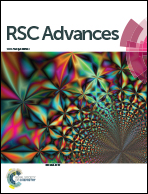Nickel ion coupled counter complexation and decomplexation through a modified supported liquid membrane system
Abstract
A modified supported liquid membrane reactor was designed and used for nickel removal from aqueous solutions using a polyacrylonitrile hydrophobic fluoropore membrane impregnated by di-2-ethylhexyl phosphoric acid (D2EHPA) as carrier in kerosene. A screening experiment using factorial design was carried out to find the effect of selected variables (factors) on nickel removal efficiency, followed by face centered composite design (FCCD) to obtain the optimum operating conditions, using response surface methodology (RSM). The factors considered in the design were feed phase pH, carrier concentration, shaking time, stirring time, stripping agent concentration, stirring speed, inert salt concentration and phase modifier concentration. It was found that feed phase pH, carrier concentration, interaction between feed phase pH and carrier concentration, stripping agent concentration and stirring time have a significant effect on nickel removal. Optimum conditions were feed phase pH 4.8, [D2EHPA]: 0.156 M, stirring time: 450 minutes and stripping phase agent of 1.5 M of H2SO4 which resulted in 95.38% of nickel removal. Stoichiometric coefficients of complexation and decomplexation reactions were obtained by Job’s continuous variation method, loading capacity and loading test and the results confirmed that one nickel ion is extracted to the organic phase by two dimeric D2EHPA molecules. The mass transfer coefficient (k) for the optimum conditions was 2.3 × 10−6 m s−1.


 Please wait while we load your content...
Please wait while we load your content...